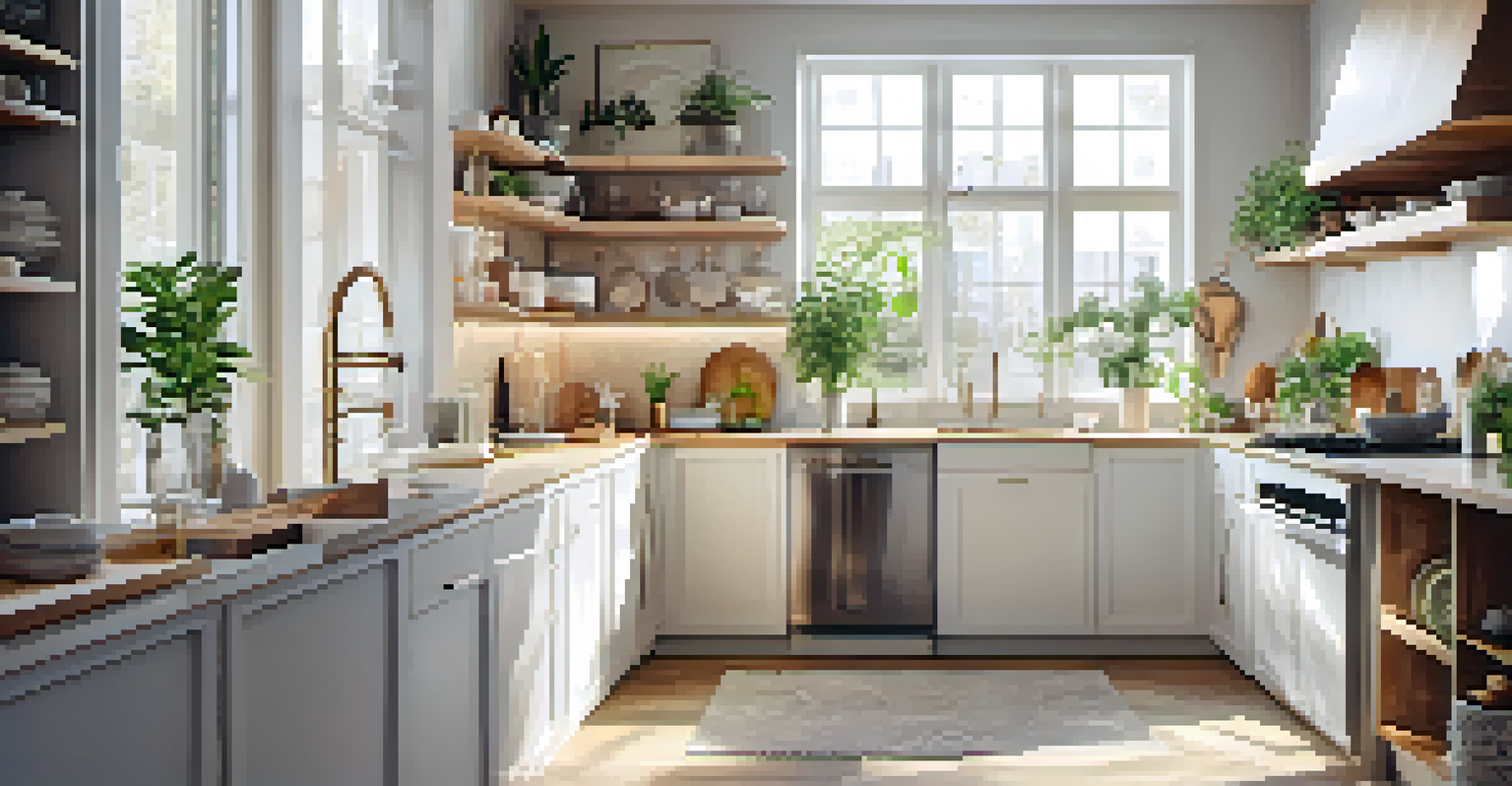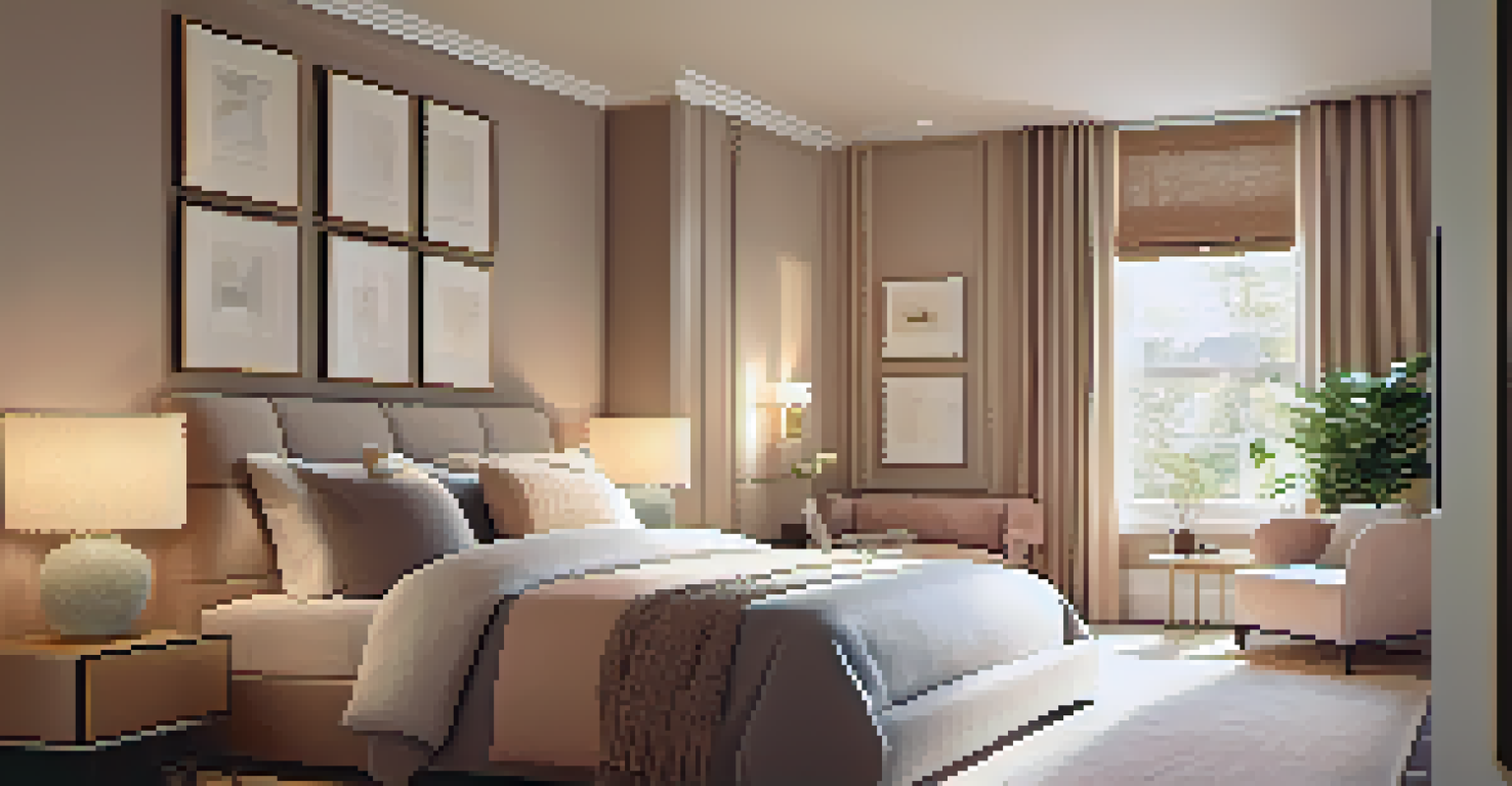How to Use Light Fixtures to Enhance Small Spaces

Understanding the Impact of Lighting in Small Spaces
Lighting can make or break a small space, creating an illusion of openness or coziness. Proper lighting helps highlight your room's best features while minimizing any awkward areas. When you understand how light interacts with space, you can strategically place fixtures to enhance your environment.
Lighting is a vital part of the design process that can change the perception of space and mood.
For instance, a well-placed pendant light can draw the eye upward, creating the impression of higher ceilings. Similarly, using softer, warmer lights can make a space feel inviting and larger than it is. By focusing on how you illuminate your space, you can create a welcoming atmosphere.
Ultimately, the right light fixtures not only brighten a room but also add character and personality. Consider your space's functionality and aesthetics to ensure that your lighting choices complement your overall design.
Choosing the Right Light Fixtures for Small Rooms
When selecting light fixtures for small spaces, consider size, scale, and style. Oversized fixtures can overwhelm a compact area, so opt for slimmer designs like wall sconces or flush mounts. These types of fixtures often provide ample light without taking up valuable space.

Also think about the style of your fixtures. A sleek, modern design can make a room feel more spacious, while vintage or ornate fixtures can add a touch of charm. The key is to choose fixtures that resonate with your personal taste while remaining functional.
Lighting Creates Space Illusions
Proper lighting can transform small rooms by creating illusions of openness and enhancing the overall atmosphere.
Don't forget about versatility! Consider fixtures that serve dual purposes, such as a floor lamp with a built-in shelf or a pendant that doubles as a statement piece. This way, you not only light up your space but also add to its functionality and design.
Layering Light for Depth and Dimension
Layering light is essential in small spaces to create depth and dimension. Instead of relying solely on one overhead light, incorporate ambient, task, and accent lighting. This approach ensures that your space feels well-lit and inviting.
Good lighting can create a sense of space, warmth, and comfort in any environment.
For example, combine a central ceiling fixture with table lamps on side tables for task lighting. Additionally, using LED strip lights under shelves or cabinets can provide accent lighting that highlights your decor. These layers of light work together to create an inviting atmosphere.
By mixing different types of lighting, you can also adjust the mood of your space. Want a cozy vibe for a movie night? Dim the overhead lights and let the table lamps shine. This flexibility is particularly beneficial in small rooms that often serve multiple purposes.
Using Mirrors to Enhance Lighting Effects
Mirrors are a fantastic tool for enhancing lighting effects in small spaces. Strategically placing mirrors can reflect light, making a room feel brighter and more open. A well-placed mirror can act as a light source, bouncing illumination around the room.
For instance, consider hanging a large mirror opposite a window. This not only amplifies natural light during the day but also creates a stunning visual effect. Mirrored furniture, like a console table, can also contribute to this effect, making your space feel larger.
Layered Lighting Adds Depth
Incorporating various types of lighting, such as ambient, task, and accent, adds depth and dimension to small spaces.
In addition to reflecting light, mirrors can add a decorative element to your space. Choose a unique frame that complements your decor style, turning the mirror into a statement piece that enhances both the light and overall aesthetic of your room.
Maximizing Natural Light with Your Fixtures
Natural light is a powerful ally in small spaces, and your light fixtures can help maximize it. Use sheer curtains or blinds to allow sunlight to filter through while maintaining privacy. This creates an airy feel that makes your small space more inviting.
Positioning your light fixtures to take advantage of natural light can also make a significant difference. For example, place lamps near windows to enhance the brightness during the day, creating a seamless transition between natural and artificial lighting.
Additionally, consider light fixtures with reflective surfaces. Metallic finishes can catch and amplify natural light, adding a warm glow to your space. This simple adjustment can transform how your small area feels throughout the day.
Color Temperature and Its Effects on Small Spaces
The color temperature of your light fixtures can dramatically affect the ambiance of your small space. Light bulbs come in various temperatures, ranging from warm (yellowish) to cool (bluish). Choosing the right temperature can enhance the room's mood and make it feel more spacious.
For example, warm white lights (around 2700K) create a cozy and inviting atmosphere, perfect for living rooms and bedrooms. On the other hand, cooler lights (around 4000K) can make a space feel more vibrant and energetic, ideal for kitchens or workspaces.
Mirrors Amplify Natural Light
Strategically placed mirrors can reflect light, making small areas feel brighter and more spacious.
Experimenting with different temperatures can help you find the perfect balance for your small area. Consider using dimmable bulbs to adjust the temperature and brightness according to the time of day or occasion, giving your space flexibility and warmth.
Creative Uses of Accent Lighting in Tight Areas
Accent lighting is a brilliant way to draw attention to specific features in small spaces. This type of lighting serves as a spotlight, highlighting artwork, plants, or architectural details. By strategically placing accent lights, you can create visual interest and depth in an otherwise compact area.
For example, consider using wall-mounted picture lights to illuminate your favorite artwork. This not only adds a layer of sophistication but also helps define the space. Similarly, using LED uplighting around plants can create a dramatic effect, making them a stunning focal point.

Accent lighting can also serve a functional purpose, such as illuminating shelves or bookshelves. This draws the eye and encourages exploration, making your space feel more inviting while showcasing your personality and style.